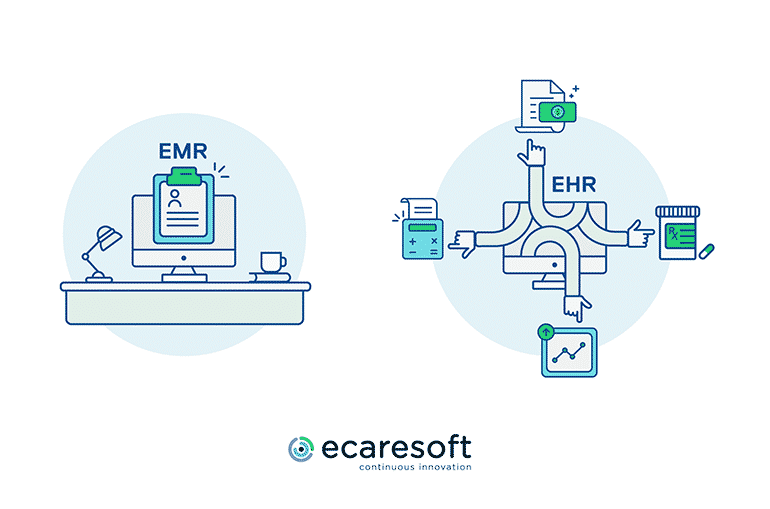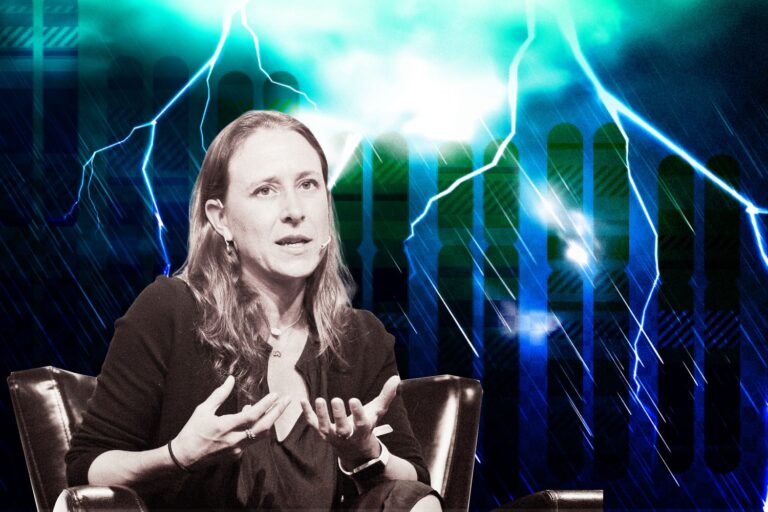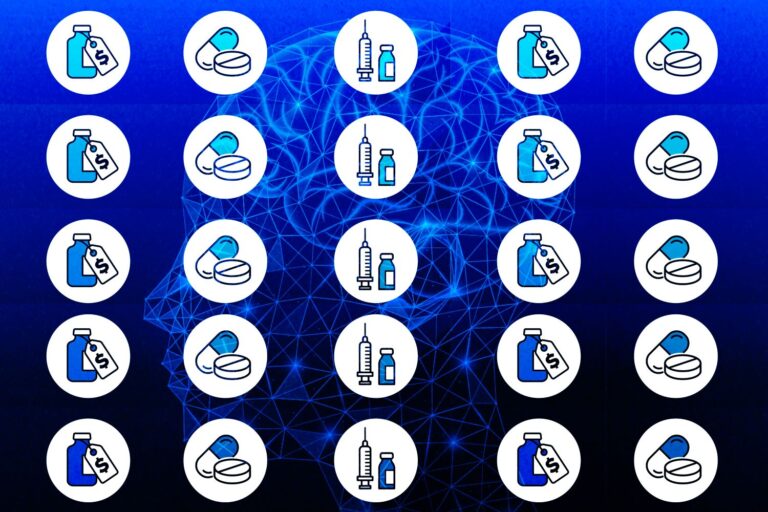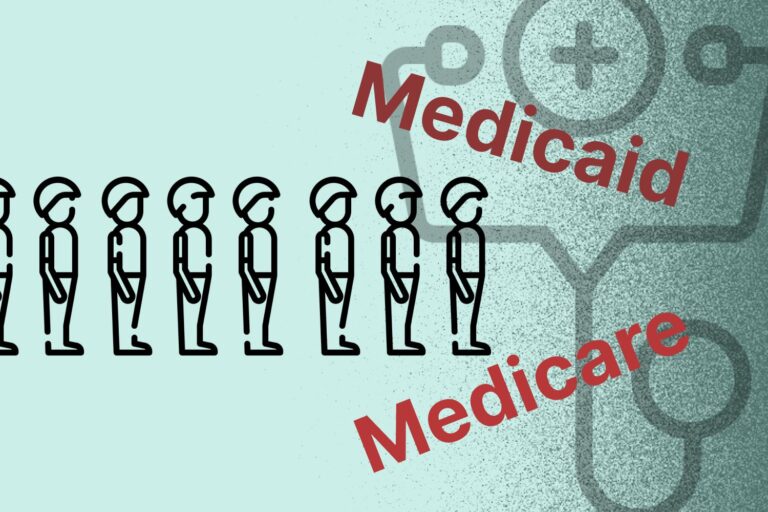EMR and EHR in a Solid Nutshell
What you’ve known so far about patient management software is precious, but it doesn’t hurt anyone to review the basic, or if you are new to the medical management software, you are sure to find yourself some useful information for your institution.
The transition from tradition paper to digitalized record has helped doctors, nurses, surgeon, physicians in various hospitals to deliver a better and efficient healthcare service. EMR and EHR play the two main character in this significant changing movement of the medical industry.
You may be wondering who they are? Or the proper question should be
1. What are EMR and EHR?
What is it?
EMR stands for Electronic Medical Record, and EHR stands for Electronic Health Record.
EMR is an individually digital version of a patient’s medical record. In one’s EMR, the medical practitioner shall find medical’s history, previous diagnoses, and treatments which had been implemented by a doctor, surgeon, specialist.
EHR is also a medical practice management software serving the same goal as putting a patient’s record to the digital world. The electronic health record is designed to share with other healthcare providers so authorized users may instantly access a patient’s medical chart from across different healthcare providers.

Well, reaching this far should help you have some understanding of these medical software packages.
As you may be wondering, there are significant differences between these two which leads us to the next part.
2. Difference
The most apparent thing that best distinguishes these two software packages is the initial letter in its name which is “M” and “H.”
As for something more profound and less humor, EMR is a subset of EHR. You may notice that I intentionally put the EMR’s definition before EHR’s definition to partially describe how the term is becoming broader. If you are still confusing, then check the below illustration

To understand it better, here are two main points you should jot down to better differentiate about EMR and EHR.
- EMR is a more disclosed medical software package and not meant to share outside of the patient’s desired institution.
- EHR provides a bigger picture of the patient’s medical history and is designed to share with many authorized healthcare providers.
EHR works best in the event a patient wishes to switch to another specialist or hospital across the state or the world. This universal feature should help patient’s new healthcare provider the picture they need to deliver the best-personalized care.
Then, what about
3. Benefits
Both EMR and EHR are fantastic patient management software with various positive effects for the healthcare provider and stakeholders. Despite their differences, they are dedicated to supporting physician in their daily task more efficiently which include the following bright sides:
- They ease the updating information process which reduces the time for administrative staff and various overhead such as drug expenditure, billing services, billing errors, etc.
- They grant access to information sharing cutting all the unnecessary medical test.
- They put all the notes and medical charts in one place reducing the time to decode one’s physician unreadable handwritten scribble.
- All prescribed medication is more intuitive and safer for patients thanks to these two medical software packages.
- The more information EMR and EHR provide (e.g., medical history, allergies, chart), the wiser the decision-making and less ambiguous diagnoses
But wait, there’s more. The best part is patient care.
Raising customer satisfaction is one of the most important goals of any provider. Implementing patient management software in hospital institutions not only brings benefits to the staff but also for the patient.

EMR and EHR also serve the objective of making patient and family member more aware and involved in the treatment process. With various healthcare application in mobile devices, patient and loved ones can be informed on the doctor visit; the prescribed medication needs to take daily, upcoming or follow-ups and related medical advice.
The medical software packages assist people to do their educational research with related articles, videos, blog posts, infographic…to better informed about the upcoming procedure they are about to take. Furthermore, they also provide educational and informative resources which give people advice on a preventive act for diseases or adjusting current habit to lead a healthy lifestyle.
But why many hospitals still reluctant to apply these advanced medical software packages to their hospitals?
Check the next part out!
4. Why Not EMR and EHR?
Before anyone invests, buying any machines or constructing a new building, they must go through a board of directors or shareholders for approval. The same thing goes for patient management software like EMR and EHR.
Here are a few of the following arguments that makes healthcare providers re-consider the usefulness of medical technology:
Cost
Some healthcare provider may argue that they are not convinced about the return on investment of the EMR and EHR adoption. According to a survey by Office of the National Coordinator for Health Information, healthcare provider had integrated EMR stated that it reduces productivity, contradicted with the benefits I said above, as well as the need for technical assistant which may cause a headache for the administration board.
It turns out that implementing EMR and EHR cause productivity PLUNGE…but if only the healthcare provider has a small scale like office-based physicians.

Many small physicians who open their clinic in their area could see no expense reduction by integrating patient management software. On the other hand, they may have to deal with financial risk if implementing the software. And given the small scale of the clinic, patients may feel more secure with the information they share with the favored doctor at the clinic.
Maintenance Cost
The above section is the software price, and here I’m talking about the cost when you already have the software.

The cost raises doubt among shareholders whether to invest in one seems to be a good investment, but possibly a painful loss. Moreover, technology keeps advancing itself, and most software needs updates. What happens is that in the long-run, that ongoing updating cost may seem unbearable for some institutions. Another thing is the risk of malfunction. If it ever happens, the workflow could be affected which disrupting the budget quite massively.
Training Cost
How could a medical software package be useful if the staff and doctors don’t know how to operate it?
This brings in another bill for the financial department.

Delivering training session for new employees should be an easy task for most HR executives, the difficult task is the experienced and existing employees. They are used to working with the workflow are reluctant to make a change.
At this point, shareholders wish there are not anything that could be worse than this.
Well, until you read the next section.
Software Quality and Usability
What could be more frustrating than after adopting EMR and EHR software, the quality is not what you expected. The unwanted condition could result in reduce productivity and increase various cost for the healthcare provider while quality has always been an essential element of every business when purchasing products and services from another company.

So, do all the disadvantages you have just read discouraging you from implementing practice management software?
Certainly not.
5. Why
Why your institution needs EnvZone?
EnvZone gives you tools and services to better compete in the modern business environment.
* We offer affordable services which are critical to the growth of your business.
* We have a dedicated team of talents who make it their business to know your product and services.
* We provide a trusted solution to manage overhead costs of handling your business
* We drive results which focused on your business goals and values.
If you need a medical software package, you know EnvZone is ready to help you.
Related post: 5 Astounding Healthcare Trends You Need to Know in 2019









